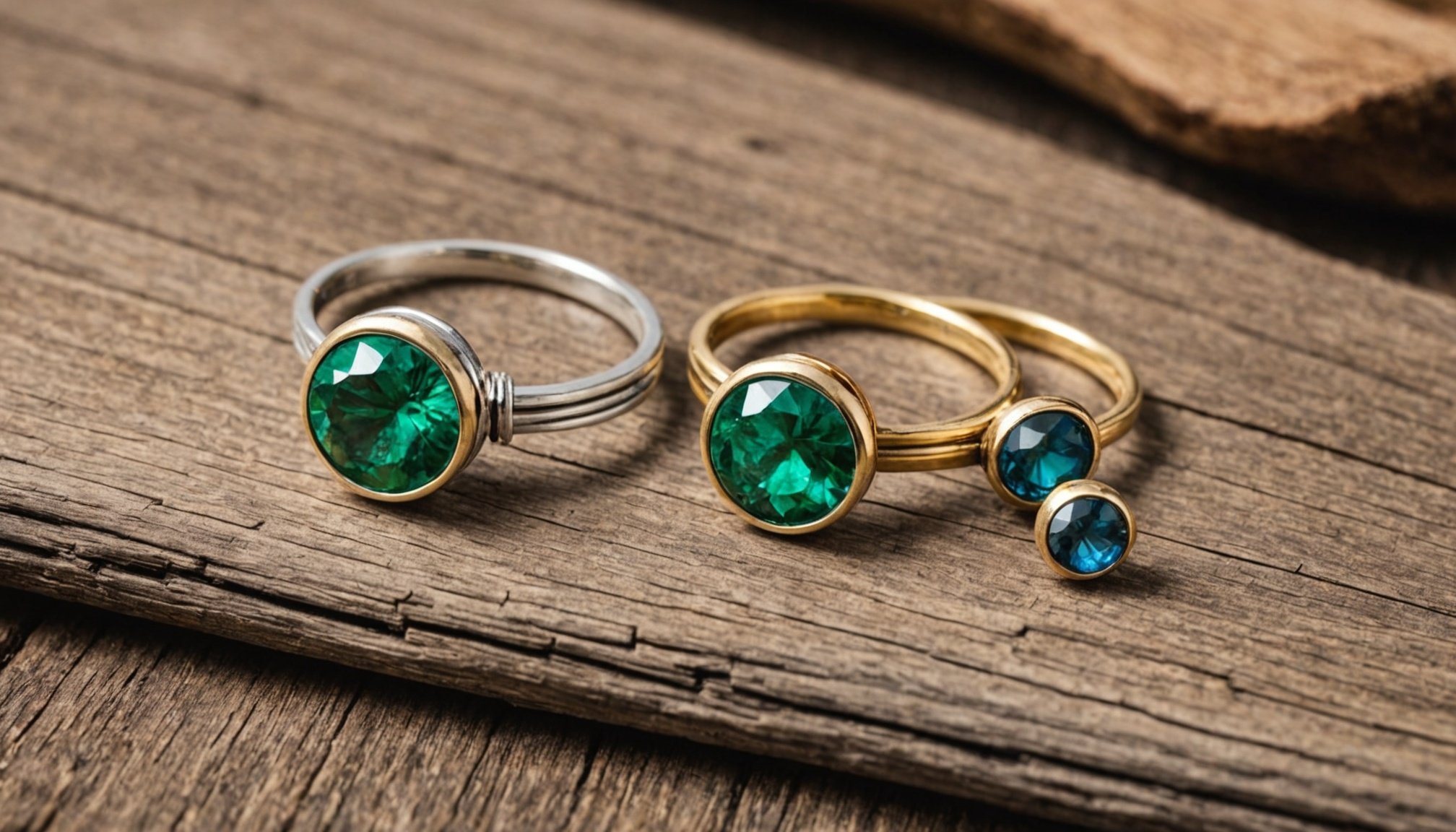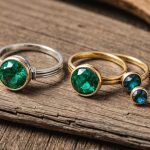Understanding Eco-Friendly Jewelry
Understanding eco-friendly jewelry involves uncovering the nuances of what’s behind it. It’s not just about aesthetics; these pieces are crafted with a focus on environmental responsibility. They incorporate sustainable options using recycled metals, lab-grown gemstones, and natural or organic materials, reducing the ecological footprint associated with traditional jewelry.
Traditional jewelry production often involves mining, a process with significant environmental repercussions. This method disrupts ecosystems, causes pollution, and requires high energy use. In contrast, eco-friendly pieces aim to mitigate these impacts by prioritizing sustainability and ethical sourcing.
Have you seen this : Transform your posture: top stretching routines for office workers to relieve tension
The importance of sustainability in the jewelry industry extends beyond the environment. It’s about advocating for fair labor practices and ensuring safe working conditions. Sustainable jewelry options thus offer consumers a chance to make ethically conscious decisions while still enjoying the craftsmanship and beauty of the pieces they wear. This shift in consumer preference is driving many brands to adopt more sustainable practices, reflecting a growing awareness of the industry’s role in fostering positive change.
Materials to Consider
When navigating ethical jewelry, understanding the types of sustainable materials is key. These components not only minimise environmental impact but also contribute to the growing demand for more responsible consumerism.
Also to read : Revitalize your relationship with food: unlocking the benefits of intuitive eating for a confident body image
Recycled Metals
A primary choice in sustainable jewelry is using recycled metals. This approach significantly reduces the need for mining new resources, preserving ecosystems and lowering energy consumption. Recycled gold, silver, and platinum retain their quality, making them an ideal choice without aesthetic compromise.
Lab-Grown Gemstones
The rise of lab-grown gemstones offers a viable alternative to their mined counterparts. Created in controlled environments, these stones mimic natural processes, eliminating the harsh environmental and social repercussions of traditional mining. Lab-grown gems exhibit the same beauty and durability, making them increasingly popular in the eco-conscious market.
Natural and Organic Materials
Exploring natural options like wood, bamboo, and cork can infuse a distinctive charm into jewelry pieces. These materials are often locally sourced, biodegradable, and processed with minimal chemical interventions. Their organic nature allows for a unique aesthetic while supporting sustainable practices. In using such materials, ethical jewelry embraces innovation without sacrificing style.
Certifications and Standards
In the world of eco-friendly jewelry, certifications serve as a crucial benchmark for assessing the ethical standing of products. These ethical certifications ensure adherence to jewelry standards, providing consumers with the assurance of verified ethical sourcing. Among the reputable certifications, the Responsible Jewellery Council (RJC) emphasizes sustainable and ethical practices throughout the supply chain. Meanwhile, Fairtrade Gold standards aim to ensure fair labor practices, uplifting mining communities.
The importance of these certifications extends beyond mere labels. They symbolize commitment to environmental stewardship and responsible manufacturing practices. By seeking certified sustainable jewelry options, buyers can be confident about their purchase’s reduced environmental footprint and ethical contributions.
Consumers can identify certified eco-friendly jewelry by checking for certification logos or researching brands’ affiliations with recognized certifying bodies. Additionally, transparency is key; trustworthy brands will readily share information regarding their certification status and ethical sourcing methods. Therefore, buyers should prioritise jewelry that meets these standards, ensuring their investments are aligned with both personal values and global sustainability efforts. Highlighting these aspects not only contributes to informed decision-making but also supports a growing movement towards sustainable jewelry options that respect both people and planet.
Ethical Brands and Designers
The world of sustainable jewelry brands and ethical designers is vast and growing. These brands are committed to reducing their environmental impact through responsible production practices and innovative designs. Choosing a brand focused on sustainability not only advances eco-friendly practices but also supports a mindful industry transformation.
Some notable ethical designers distinguish themselves by their transparent supply chains and commitment to sourcing materials responsibly. These designers often work closely with artisans, ensuring that fair wages and safe working conditions are maintained. The ethical aspect involves verifying the origins of gems and metals, minimizing environmental harm, and promoting social equity in mining communities.
Consumer reviews and feedback are crucial in assessing the authenticity of sustainable practices in the jewelry industry. Engaged consumers often share insights about a brand’s ethical commitments or shortcomings, shaping a broader understanding of industry standards. These reviews also serve as guidance for future buyers, allowing them to make informed decisions based on the experiences of others. By prioritizing purchases from sustainable jewelry brands, consumers contribute to a cycle of responsible fashion, ensuring that their accessories are aligned with both personal ethics and global sustainability.
Benefits of Choosing Eco-Friendly Jewelry
Opting for eco-friendly jewelry brings numerous benefits that extend beyond personal enjoyment. It reduces environmental harm, as sustainable jewelry choices often employ ethically sourced or recycled materials, like lab-grown gems and reclaimed metals. This significantly lowers the ecological footprint compared to traditional methods that involve harmful mining practices.
Moreover, sustainable jewelry options promote social responsibility by supporting fair trade practices and ensuring safe working conditions for artisans. This ethical approach fosters positive changes in communities dependent on jewelry production, underscoring the value of social equity. Supporting fair wages and ethical labour also aligns with sustainable development goals, advocating for more humane and just industry practices.
On a personal level, choosing eco-friendly pieces can carry emotional and symbolic significance. Many individuals find satisfaction and meaning in knowing their jewelry purchases contribute to the well-being of our planet and society. This shift not only symbolizes a commitment to sustainability but also reflects aligning personal values with consumer habits.
By opting for eco-friendly choices, individuals position themselves as conscientious consumers, partaking in a global movement that integrates environmental mindfulness and ethical integrity into daily life. Additionally, it helps encourage the industry to pursue more sustainable practices.
Practical Tips for Making Informed Purchases
Navigating the world of sustainable jewelry requires a well-rounded approach. Here are some practical tips to ensure your jewelry purchases align with your eco-friendly values.
Before buying, research thoroughly. Dig into brands’ sustainability reports and transparency practices. Identify brands that showcase a firm commitment to ethical sourcing and environmentally friendly production. Look for detailed information about their material sources and whether they adhere to ethically certified standards.
When shopping, question vendors about their supply chains. Ask about labor practices and the origins of their jewelry materials. A genuine, sustainable brand will willingly discuss its practices and standards.
Consider consulting a jewelry buying guide for additional guidance. These resources often provide insights on the best brands and materials that align with the principles of eco-friendly jewelry.
Engage with communities focused on ethical purchasing for shared experiences and recommendations. These forums can help identify trends and trusted sources for sustainable jewelry. Making informed decisions in the jewelry marketplace not only supports ethical practices but also contributes positively to the global movement for sustainable living.
Resources for Further Exploration
For those eager to delve deeper into the world of sustainable jewelry, several resources offer valuable insights and knowledge. Begin by exploring dedicated websites that provide comprehensive information about eco-friendly practices and brands aiming to reduce their ecological footprint. Platforms like “EcoCult” and “Sustainable Jungle” share stories and lists of brands devoted to transparent and responsible jewelry production.
Books like “Cradle to Cradle: Remaking the Way We Make Things” by William McDonough and Michael Braungart highlight the principles of sustainable production beyond the jewelry industry. Such resources can broaden your understanding of eco-conscious philosophies.
Documentaries also serve as a powerful medium for illustrating the environmental and social impact of fashion and jewelry. Titles such as “The True Cost” offer a critique of the fashion industry, emphasizing the need for ethical practices.
Engaging with community groups and forums focused on ethical jewelry can provide an interactive way to learn from like-minded individuals. These platforms offer a space to share experiences, insights, and recommendations regarding sustainable jewelry options. Through these resources, individuals can deepen their commitment to responsible consumerism and promote positive change within the industry.








